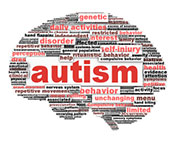
THURSDAY, Dec. 18, 2014 (HealthDay News) — Children born to moms who were exposed to high levels of air pollution late in pregnancy may have an increased risk of developing autism, a U.S. study suggests.
Researchers found that of nearly 1,800 U.S. women who gave birth between 1990 and 2002, those exposed to the most air pollution during pregnancy were twice as likely to have a baby who later developed autism. And exposure during the third trimester, specifically, showed the strongest correlation to autism risk.
Experts said the findings, reported in the Dec. 18 online edition of Environmental Health Perspectives, add to evidence that air pollution may contribute to autism.
“This reinforces our confidence that air pollution is a risk factor,” said Michael Rosanoff, director of public health research for the advocacy group Autism Speaks.
Rosanoff, who was not involved in the study, stressed that people should keep the odds in perspective: A twofold increase in a small risk is still a small risk.
In addition, it’s important to note that while this study found an association between air pollution exposure in pregnancy and the risk of autism, the study doesn’t prove that smog exposure caused autism.
Still, the findings are important because they point to an autism risk factor that can be changed, Rosanoff said.
Several studies have found a correlation between exposure to air pollution during pregnancy and an increased risk of autism spectrum disorders, or ASDs — a group of developmental disorders that affect a child’s ability to communicate and socialize.
Now the new findings add some key pieces to the bigger picture, according to senior researcher Marc Weisskopf, an associate professor at the Harvard School of Public Health in Boston.
“Most importantly,” Weisskopf said, “we’re finding that the association is specific to pregnancy, especially the third trimester.”
His team found no statistical link between autism risk and moms’ air pollution exposure before or after pregnancy.
“That helps rule out a lot of other factors that could explain the association,” Weisskopf said.
For example, he noted, it could be argued that exposure to air pollution is just a marker of lower income and less prenatal care, which could be the “real” risk factor. But if that were the case, Weisskopf said, pollution exposure before and after pregnancy should be tied to autism risk, too.
Rosanoff agreed that pinpointing the third trimester as a “critical window” helps strengthen the case that air pollution, itself, is contributing to autism in some cases.
Exactly why is not clear, though.
“With brain development, different events happen during different parts of pregnancy,” Weisskopf said. “During the third trimester, there’s a lot of neuron growth and migration in the brain.”
But, he said, more research is needed to understand how fine-particle air pollution could affect the fetal brain.
The findings are based on 245 children with autism spectrum disorders and more than 1,500 without. All of the children were born to women taking part in a long-term health study of U.S. nurses. Weisskopf’s team used air-quality data from the U.S. Environmental Protection Agency (EPA) to estimate monthly pollution levels in each woman’s neighborhood before, during and after pregnancy.
The investigators found that a particular type of air pollution — fine-particle pollution — was tied to the risk of autism spectrum disorders. Those fine particles are released into the air when fossil fuels are burned. Car exhaust, wood burning and industrial sources (such as power plants) all contribute, according to the EPA. Indoors, burning candles or using fireplaces can produce fine-particle pollution.
Weisskopf stressed that while air pollution was tied to a relatively higher risk of autism spectrum disorders, the absolute risk to any one woman exposed during pregnancy could be very small.
“We don’t know how much of the risk of autism this accounts for,” Weisskopf said. “It could be quite small.”
Plus, Rosanoff said, autism spectrum disorders are complex disorders that arise from some combination of genetic predisposition and any number of environmental risk factors that are not yet fully understood.
“There is no one environmental factor that leads to autism,” Rosanoff said.
Autism spectrum disorders range widely in severity — from milder problems with social interaction to “classic” cases of autism, where a child may speak little or not at all, and obsessively focus on only a few, repetitive behaviors. And experts believe that the different combinations of risk factors lead to individual cases of autism spectrum disorders, according to Autism Speaks.
For now, Weisskopf said, pregnant women can take steps to avoid air pollution, such as avoiding walks near busy roadways. The EPA suggests checking the online Air Quality Index for your local area, and staying indoors on days when air quality is poor.
More information
The U.S. National Institute of Environmental Health Sciences has more on autism.
Copyright © 2025 HealthDay. All rights reserved.

